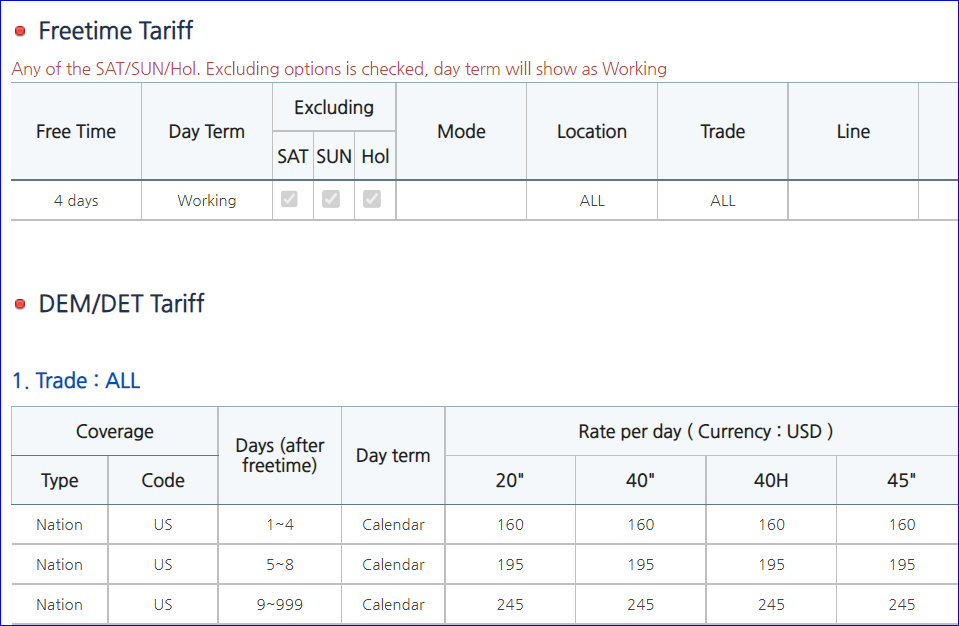What is Detention in Shipping: What You Need to Know
Learn how detention in shipping works and essential information you need to know.
Table of Contents
If you have a business that requires international shipping, you need to know certain terms, procedures, and operations of shipping. Detention is essential in shipping as it could determine how much profit you could keep in the business and the amount of loss incurred. Hence, it is necessary to understand the term detention in shipping and how to avoid its charges.
What is Detention in Shipping?
Detention in shipping is the period a loaded container leaves the Port to the period it returns to the Port empty. It spans the period the filled container leaves the Port to when it is unloaded at its required destination and arrives back to the Port empty.
Detention in shipping could attract charges if the free time for the container to arrive back at the Port was exceeded. However, these charges or costs can be avoided. Plunge into this article to learn more about detention in shipping, detention charges, and how detention charges can be avoided.
What is Detention Meaning in Shipping?
The Port is usually not the final destination of goods. The container that arrives at the Port is usually filled with goods meant to be delivered to a destination outside the Port or terminal. Once the container arrives at the Port, the period that the filled containers go out of the Port to deliver the goods to their final destination to the period the empty container returns to the Port is known as detention.
In straightforward terms, detention is the period a container spends outside the terminal, measuring between picking them up when they are full and returning them when they are empty.
Detention Charges in Shipping
In shipping, there is usually a term called free time, which is the amount of time a consignee is allowed to use a container outside the terminal or Port without being charged. This time period varies depending on the port and shipping line. Once this free time has been exhausted and the empty container hasn't returned to the terminal, the consignee will be charged a fee on a daily basis which also varies.
You are required to watch out for the free time offered by the shipping line before booking a shipment to avoid getting trapped with a detention charge. Hence, this leads us to the following term;
What is Detention Charge in Shipping?
Detention charges are a fee payable by a consignee for having a container beyond the free allotted time after leaving the Port or terminal. It is the cost incurred when you go beyond the free time offered by the carrier to return an empty container to the terminal or Port.
How to Calculate Detention Charges?
Detention charges are usually charged on a daily basis. That's why Per Diem is also used for the same meaning as detention in shipping. Now let us look at a practical scenario of how detention charges are calculated. Let's take the U.S. import detention charges of HMM for example.
Hyundai Merchant Marine (HMM) U.S. Import Detention

From the image above, we can see HMM provides 4 working days as free days. However, if the empty container is not returned to the terminal within 4 working days, HMM will charge a detention fee for overuse of the container.
The detention fee has three levels. From 1 to 4 days after the free time, HMM will charge $160 per day per container. For the second level, which is from 5 to 8 days after the free time, HMM will charge $195. Finally, for the 9th day and beyond, HMM will charge $245 per day per container after the empty container is returned to the terminal.
Who is Responsible for Detention Charges?
Generally, the contractual parties who sign the shipping agreement are liable for the cost. In the case of import, the consignee, that is, the receiver would be liable for the charge. Similarly, in the case of export, the shipper will be responsible for the charges.
Thus, the shipper and consignee will be responsible for detention charges for delays in the use of containers outside the Port or terminal.
Top 5 Tips on How to Avoid Detention Charges
There are quite a number of things you can do to minimize or even completely avoid detention charges. This requires adequate planning and a professional approach. Below are 5 top tips on how to avoid detention charges;
- You must return the container at the stipulated time to avoid detention charges. To do this, you must plan and schedule the unloading ahead of time with the detention clock to ensure the return to the Port quickly.
- Schedule a trucking service in advance to ensure promptness of pick up and unloading.
- You could negotiate for extended free time for large volumes of a container.
- You can also avoid detention by tracking the container status regularly and pushing the trucking company to return the empty container timely.
- You can also avoid or minimize detention charges by comparing shipping lines. By doing so, you could deal with those with suitable free time or even the detention rate.
Conclusion
Detention sometimes leads to financial losses when not handled properly. It is a significant additional expense to the international shipping rate. Every business has the goal of maximizing its profit and minimizing costs.
Detention charges are part of the organization's cost and can be avoided or minimized to maximize profit if professionally handled and planned adequately.